#protestantism
Text

8K notes
·
View notes
Text
I've been seeing this more and more recently, so I'm curious what you all think about this.
Feel free to include in the tags why you voted a particular way.
#Christianity#Catholicism#Orthodox Christianity#Protestantism#Religion#I know 'other Christian denomination' would likely come under Protestant for a lot of people. But there's some people that don't identify#as Protestant despite not being Orthodox or Catholic#so it saves those arguments lol#If you're a Catechumen then vote for the denomination that you're converting to#If you're just considering Christianity but aren't sure on a denomination etc then vote 'Other'
285 notes
·
View notes
Text



Honestly, the biggest sin of protestantism isn’t the schism, but their sheer lack of DRIP.
4K notes
·
View notes
Text
Catholic guilt is a thing people joke about, but it’s so real and can be so painful to cope with, whether or not you’re still practicing. Combine that with America’s Protestant work ethic, and you’ve got quite a mess on your hands. So, for anyone who needs to hear this today:
It’s okay to rest.
It’s okay to nap.
It’s okay to go to bed early and wake up late.
It’s okay if you didn’t do chores today.
It’s okay if you half-assed your (home)work.
It’s okay if you were a little late sending our birthday, holiday, or thank-you cards.
It’s okay if you’re a little cringe.
It’s okay if you’re weird.
It’s okay if you mentally ill.
It’s okay if you’re disabled.
It’s okay if you’re queer.
It’s okay if you’re poor.
It’s okay if you’re struggling.
It’s okay if you don’t have a side hustle.
It’s okay if you maintain your hobbies as hobbies.
It’s okay if you don’t like your job or if you don’t like working at all.
It’s okay if you don’t want to conform to fit a mold that doesn’t fit you.
It’s okay if your goals and values don’t align with your parents’.
It’s okay if you don’t want kids.
It’s okay to be a pet or plant parent.
It’s okay if you have a found/chosen family.
It’s okay if you don’t speak to your relative(s).
It’s okay if you don’t speak to former friends.
It’s okay if you don’t believe in god(s).
It’s okay if you don’t believe in an afterlife.
It’s okay if you don’t want to celebrate the holiday(s).
It’s okay if you need to ask for help.
It's okay to not be okay.
It’s okay to want to be okay.
You deserve to be okay. ♥︎
#reminders#love#religion#christianity#religious trauma#catholicism#catholic guilt#protestantism#protestant work ethic#hustle culture#personal#op#100+ notes
276 notes
·
View notes
Text
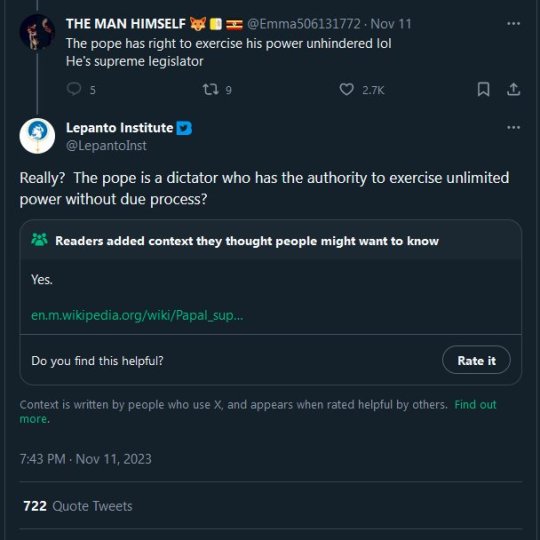
Every so often, a bunch of Catholics who want to be even more bigoted will reinvent Protestantism from first principles
290 notes
·
View notes
Text

John Everett Millais (1829-1896)
"Mercy: St Bartholomew’s Day, 1572" (1886)
Oil on canvas
Pre-Raphaelite
Located in the Tate Gallery, London, England
The painting portrays an imaginary incident at the time of the St. Bartholomew's Day Massacre in Paris on 24 August 1572, when thousands of Protestants were slaughtered by Catholics.
A Nun begs for '"Mercy"' on behalf of the hapless Protestants, but the man pulls her arm away and moves to follow the call to arms indicated by the Friar who beckons from the open doorway.
#paintings#art#artwork#history painting#french history#john everett millais#oil on canvas#pre raphaelite#pre raphaelism#tate gallery#museum#art gallery#english artist#british artist#catholocism#protestantism#violence#costume#costumes#history#1880s#late 1800s#late 19th century#a queue work of art
114 notes
·
View notes
Text
Why People Are Wrong About the Puritans of the English Civil War and New England
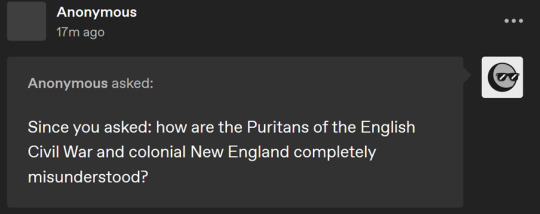



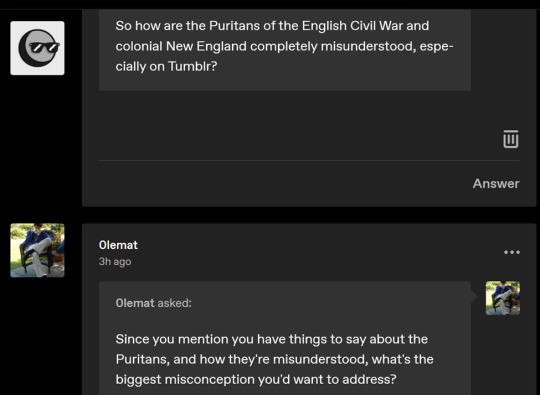
Oh well, if you all insist, I suppose I can write something.
(oh good, my subtle scheme is working...)
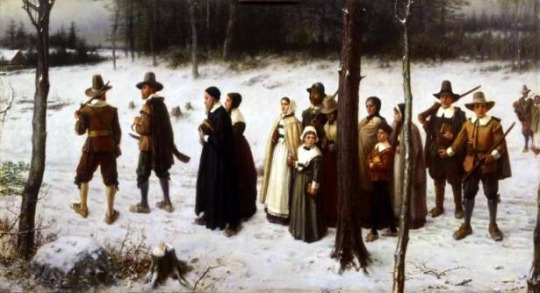
Introduction:
So the Puritans of the English Civil War is something I studied in graduate school and found endlessly fascinating in its rich cultural complexity, but it's also a subject that is popularly wildly misunderstood because it's caught in the jaws of a pair of distorted propagandistic images.
On the one hand, because the Puritans settled colonial New England, since the late 19th century they've been wrapped up with this nationalist narrative of American exceptionalism (that provides a handy excuse for schoolteachers to avoid talking about colonial Virginia and the centrality of slavery to the origins of the United States). If you went to public school in the United States, you're familiar with the old story: the United States was founded by a people fleeing religious persecution and seeking their freedom, who founded a society based on social contracts and the idea that in the New World they were building a city on a hill blah blah America is an exceptional and perfect country that's meant to be an example to the world, and in more conservative areas the whole idea that America was founded as an explicitly Christian country and society.
Then on the other hand, you have (and this is the kind of thing that you see a lot of on Tumblr) what I call the Matt Damon-in-Good-Will-Hunting, "I just read Zinn's People's History of the United States in U.S History 101 and I'm home for my first Thanksgiving since I left for colleg and I'm going to share My Opinions with Uncle Burt" approach. In this version, everything in the above nationalist narrative is revealed as a hideous lie: the Puritans are the source of everything wrong with American society, a bunch of evangelical fanatics who came to New England because they wanted to build a theocracy where they could oppress all other religions and they're the reason that abortion-banning, homophobic and transphobic evangelical Christians are running the country, they were all dour killjoys who were all hopelessly sexually repressed freaks who hated women, and the Salem Witch Trials were a thing, right?
And if anyone spares a thought to examine the role that Puritans played in the English Civil War, it basically short-hands to Oliver Cromwell is history's greatest monster, and didn't they ban Christmas?
Here's the thing, though: as I hope I've gotten across in my posts about Jan Hus, John Knox, and John Calvin, the era of the Reformation and the Wars of Religion that convulsed the Early Modern period were a time of very big personalities who were complicated and not very easy for modern audiences to understand, because of the somewhat oblique way that Early Modern people interpreted and really believed in the cultural politics of religious symbolism.
So what I want to do with this post is to bust a few myths and tease out some of the complications behind the actual history of the Puritans.
Did the Puritans Experience Religious Persecution?
Yes, but that wasn't the reason they came to New England, or at the very least the two periods were divided by some decades. To start at the beginning, Puritans were pretty much just straightforward Calvinists who wanted the Church of England to be a Calvinist Church. This was a fairly mainstream position within the Anglican Church, but the "hotter sort of Protestant" who started to organize into active groups during the reigns of Elizabeth and James I were particularly sensitive to religious symbolism they (like the Hussites) felt smacked of Catholicism and especially the idea of a hierarchy where clergy were a better class of person than the laity.
So for example, Puritans really first start to emerge during the Vestments Controversy in the reign of Edward VI where Bishop Hooper got very mad that Anglican priests were wearing the cope and surplice, which he thought were Catholic ritual garments that sought to enhance priestly status and that went against the simplicity of the early Christian Church. Likewise, during the run-up to the English Civil War, the Puritans were extremely sensitive to the installation of altar rails which separated the congregation from the altar - they considered this to be once again a veneration of the clergy, but also a symbolic affirmation of the Catholic doctrine of transubstantiation.
At the same time, they were not the only religious faction within the Anglican Church - and this is where the religious persecution thing kicks in, although it should be noted that this was a fairly brief but very emotionally intense period. Archbishop William Laud was a leading High Church Episcopalian who led a faction in the Church that would become known as Laudians, and he was just as intense about his religious views as the Puritans were about his. A favorite of Charles I and a first advocate of absolutist monarchy, Laud was appointed Archbishop of Canturbury in 1630 and acted quickly to impose religious uniformity of Laudian beliefs and practices - ultimately culminating in the disastrous decision to try imposing Episcopalianism on Scotland that set off the Bishop's Wars.
The Puritans were a special target of Laud's wrath: in addition to ordering the clergy to do various things offensive to Puritans that he used as a shibboleth to root out clergy with Puritan sympathies and fire them from their positions in the Church, he established official religious censors who went after Puritan writers like William Prynne for seditious libel and tortured them for their criticisms of his actions, cropping their ears and branding them with the letters SL on their faces. Bringing together the powers of Church and State, Laud used the Court of Star Chamber (a royal criminal court with no system of due process) to go after anyone who he viewed as having Puritan sympathies, imposing sentences of judicial torture along the way.
It was here that the Puritans began to make their first connections to the growing democratic movement in England that was forming in opposition to Charles I, when John Liliburne the founder of the Levellers was targeted by Laud for importing religious texts that criticized Laudianism - Laud had him repeatedly flogged for challenging the constitutionality of the Star Chamber court, and "freeborn John" became a martyr-hero to the Puritans.
When the Long Parliament met in 1640, Puritans were elected in huge numbers, motivated as they were by a combination of resistance to the absolutist monarchism of Charles I and the religious policies of Archbishop Laud - who Parliament was able to impeach and imprison in the Tower of the London in 1641.
This relatively brief period of official persecution that powerfully shaped the Puritan mindset was nevertheless disconnected from the phenomena of migration to New England - which had started a decade before Laud became Archbishop of Canterbury and continued decades after his impeachment.
The Puritans Just Wanted to Oppress Everyone Else's Religion:
This is the very short-hand Howard Zinn-esque critique we often see of the Puritan project in the discourse, and while there is a grain of truth to it - in the Massachusetts Bay Colony, the Congregational Church was the official state religion, no other church could be established without permission from the Congregational Church, all residents were required to pay taxes to support the Congregational Church, and only Puritans could vote. Moreover, there were several infamous incidents where the Puritan establishment put Anne Hutchinson on trial and banished her, expelled Roger Williams, and hanged Quakers.
Here's the thing, though: during the Early Modern period, every single side of every single religious conflict wanted to establish religious uniformity and oppress the heretics: the Catholics did it to the Protestants where they could mobilize the power of the Holy Roman Emperor against the Protestant Princes, the Protestants did it right back to the Catholics when Gustavus Adolphus' armies rolled through town, the Lutherans and the Catholics did it to the Calvinists, and everybody did it to the Anabaptists.
That New England was founded as a Calvinist colony is pretty unremarkable, in the final analysis. (By the by, both Hutchinson and Williams were devout if schismatic Puritans who were firmly of the belief that the Anglican Church was a false church.) What's more interesting is how quickly the whole religious project broke down and evolved into something completely different.
Essentially, New England became a bunch of little religious communes that were all tax-funded, which is even more the case because the Congregationalist Church was a "gathered church" where the full members of the Church (who were the only people allowed to vote on matters involving the church, and were the only ones who were allowed to be given baptism and Communion, which had all kinds of knock-on effects on important social practices like marriages and burials) and were made up of people who had experienced a conversion where they can gained an assurance of salvation that they were definitely of the Elect. You became a full member by publicly sharing your story of conversion (which had a certain cultural schema of steps that were supposed to be followed) and having the other full members accept it as genuine.
This is a system that works really well to bind together a bunch of people living in a commune in the wilderness into a tight-knit community, but it broke down almost immediately in the next generation, leading to a crisis called the Half-Way Covenant.
The problem was that the second generation of Puritans - all men and women who had been baptized and raised in the Congrgeationalist Church - weren't becoming converted. Either they never had the religious awakening that their parents had had, or their narratives weren't accepted as genuine by the first generation of commune members. This meant that they couldn't hold church office or vote, and more crucially it meant that they couldn't receive the sacrament or have their own children baptized.
This seemed to suggest that, within a generation, the Congregationalist Church would essentially define itself into non-existence and between the 1640s and 1650s leading ministers recommended that each congregation (which was supposed to decide on policy questions on a local basis, remember) adopt a policy whereby the children of baptized but unconverted members could be baptized as long as they did a ceremony where they affirmed the church covenant. This proved hugely controversial and ministers and laypeople alike started publishing pamphlets, and voting in opposing directions, and un-electing ministers who decided in the wrong direction, and ultimately it kind of broke the authority of the Congregationalist Church and led to its eventual dis-establishment.
The Puritans are the Reason America is So Evangelical:
This is another area where there's a grain of truth, but ultimately the real history is way more complicated.
Almost immediately from the founding of the colony, the Puritans begin to undergo mutation from their European counterparts - to begin with, while English Puritans were Calvinists and thus believed in a Presbyterian form of church government (indeed, a faction of Puritans during the English Civil War would attempt to impose a Presbyterian Church on England.), New England Puritans almost immediately adopted a congregationalist system where each town's faithful would sign a local religious constitution, elect their own ministers, and decide on local governance issues at town meetings.
Essentially, New England became a bunch of little religious communes that were all tax-funded, which is even more the case because the Congregationalist Church was a "gathered church" where the full members of the Church (who were the only people allowed to vote on matters involving the church, and were the only ones who were allowed to be given baptism and Communion, which had all kinds of knock-on effects on important social practices like marriages and burials) and were made up of people who had experienced a conversion where they can gained an assurance of salvation that they were definitely of the Elect. You became a full member by publicly sharing your story of conversion (which had a certain cultural schema of steps that were supposed to be followed) and having the other full members accept it as genuine.
This is a system that works really well to bind together a bunch of people living in a commune in the wilderness into a tight-knit community, but it broke down almost immediately in the next generation, leading to a crisis called the Half-Way Covenant.
The problem was that the second generation of Puritans - all men and women who had been baptized and raised in the Congrgeationalist Church - weren't becoming converted. Either they never had the religious awakening that their parents had had, or their narratives weren't accepted as genuine by the first generation of commune members. This meant that they couldn't hold church office or vote, and more crucially it meant that they couldn't receive the sacrament or have their own children baptized.
This seemed to suggest that, within a generation, the Congregationalist Church would essentially define itself into non-existence and between the 1640s and 1650s leading ministers recommended that each congregation (which was supposed to decide on policy questions on a local basis, remember) adopt a policy whereby the children of baptized but unconverted members could be baptized as long as they did a ceremony where they affirmed the church covenant. This proved hugely controversial and ministers and laypeople alike started publishing pamphlets, and voting in opposing directions, and un-electing ministers who decided in the wrong direction, and accusing one another of being witches. (More on that in a bit.)
And then the Great Awakening - which to be fair, was a major evangelical effort by the Puritan Congregationalist Church, so it's not like there's no link between evangelical - which was supposed to promote Congregational piety ended up dividing the Church and pretty soon the Congregationalist Church is dis-established and it's safe to be a Quaker or even a Catholic on the streets of Boston.
But here's the thing - if we look at which denominations in the United States can draw a direct line from themselves to the Congregationalist Church of the Puritans, it's the modern Congregationalists who are entirely mainstream Protestants whose churches are pretty solidly liberal in their politics, the United Church of Christ which is extremely cultural liberal, and it's the Unitarian Universalists who are practically issued DSA memberships. (I say this with love as a fellow comrade.)
By contrast, modern evangelical Christianity (although there's a complicated distinction between evangelical and fundamentalist that I don't have time to get into) in the United States is made up of an entirely different set of denominations - here, we're talking Baptists, Pentacostalists, Methodists, non-denominational churches, and sometimes Presbyterians.
The Puritans Were Dour Killjoys Who Hated Sex:
This one owes a lot to Nathaniel Hawthorne's Scarlet Letter.
The reality is actually the opposite - for their time, the Puritans were a bunch of weird hippies. At a time when most major religious institutions tended to emphasize the sinful nature of sex and Catholicism in particular tended to emphasize the moral superiority of virginity, the Puritans stressed that sexual pleasure was a gift from God, that married couples had an obligation to not just have children but to get each other off, and both men and women could be taken to court and fined for failing to fulfill their maritial obligations.
The Puritans also didn't have much of a problem with pre-marital sex. As long as there was an absolute agreement that you were going to get married if and when someone ended up pregnant, Puritan elders were perfectly happy to let young people be young people. Indeed, despite the objection of Jonathan Edwards and others there was an (oddly similar to modern Scandinavian customs) old New England custom of "bundling," whereby a young couple would be put into bed together by their parents with a sack or bundle tied between them as a putative modesty shield, but where everyone involved knew that the young couple would remove the bundle as soon as the lights were turned out.
One of my favorite little social circumlocutions is that there was a custom of pretending that a child clearly born out of wedlock was actually just born prematurely to a bride who was clearly nine months along, leading to a rash of surprisingly large and healthy premature births being recorded in the diary of Puritan midwife Martha Ballard. Historians have even applied statistical modeling to show that about 30-40% of births in colonial America were pre-mature.
But what about non-sexual dourness? Well, here we have to understand that, while they were concerned about public morality, the Puritans were simultaneously very strict when it came to matters of religion and otherwise normal people who liked having fun. So if you go down the long list of things that Puritans banned that has landed them with a reputation as a bunch of killjoys, they usually hide some sort of religious motivation.
So for example, let's take the Puritan iconoclastic tendency to smash stained glass windows, whitewash church walls, and smash church organs during the English Civil War - all of these things have to do with a rejection of Catholicism, and in the case of church organs a belief that the only kind of music that should be allowed in church is the congregation singing psalms as an expression of social equality. At the same time, Puritans enjoyed art in a secular context and often had portraits of themselves made and paintings hung on their walls, and they owned musical instruments in their homes.
What about the wearing nothing but black clothing? See, in our time wearing nothing but black is considered rather staid (or Goth), but in the Early Modern period the dyes that were needed to produce pure black cloth were incredibly expensive - so wearing all black was a sign of status and wealth, hence why the Hapsburgs started emphasizing wearing all-black in the same period. However, your ordinary Puritan couldn't afford an all-black attire and would have worn quite colorful (but much cheaper) browns and blues and greens.
What about booze and gambling and sports and the theater and other sinful pursuits? Well, the Puritans were mostly ok with booze - every New England village had its tavern - but they did regulate how much they could serve, again because they were worried that drunkenness would lead to blasphemy. Likewise, the Puritans were mostly ok with gambling, and they didn't mind people playing sports - except that they went absolutely beserk about drinking, gambling, and sports if they happened on the Sabbath because the Puritans really cared about the Sabbath and Charles I had a habit of poking them about that issue. They were against the theater because of its association with prostitution and cross-dressing, though, I can't deny that. On the other hand, the Puritans were also morally opposed to bloodsports like bear-baiting, cock-fighting, and bare-knuckle boxing because of the violence it did to God's creatures, which I guess makes them some of the first animal rights activsts?
They Banned Christmas:
Again, this comes down to a religious thing, not a hatred of presents and trees - keep in mind that the whole presents-and-trees paradigm of Christmas didn't really exist until the 19th century and Dickens' Christmas Carol, so what we're really talking about here is a conflict over religious holidays - so what people were complaining about was not going to church an extra day in the year. I don't get it, personally.
See, the thing is that Puritans were known for being extremely close Bible readers, and one of the things that you discover almost immediately if you even cursorily read the New Testament is that Christ was clearly not born on December 25th. Which meant that the whole December 25th thing was a false religious holiday, which is why they banned it.
The Puritans Were Democrats:
One thing that I don't think Puritans get enough credit for is that, at a time when pretty much the whole of European society was some form of monarchist, the Puritans were some of the few people out there who really committed themselves to democratic principles.
As I've already said, this process starts when John Liliburne, an activist and pamphleteer who promoted the concept of universal human rights (what he called "freeborn rights"), took up the anti-Laudian cause and it continued through the mobilization of large numbers of Puritans to campaign for election to the Long Parliament.
There, not only did the Puritans vote to revenge themselves on their old enemy William Laud, but they also took part in a gradual process of Parliamentary radicalization, starting with the impeachment of Strafford as the architect of arbitrary rule, the passage of the Triennal Acts, the re-statement that non-Parliamentary taxation was illegal, the Grand Remonstrance, and the Militia Ordinance.
Then over the course of the war, Puritans served with distinction in the Parliamentary army, especially and disproportionately in the New Model Army where they beat the living hell out of the aristocratic armies of Charles I, while defying both the expectations and active interference of the House of Lords.
At this point, I should mention that during this period the Puritans divided into two main factions - Presbyterians, who developed a close political and religious alliance with the Scottish Covenanters who had secured the Presbyterian Church in Scotland during the Bishops' Wars and who were quite interested in extending an established Presbyterian Church; and Independents, who advocated local congregationalism (sound familiar) and opposed the concept of established churches.
Finally, we have the coming together of the Independents of the New Model Army and the Leveller movement - during the war, John Liliburne had served with bravery and distinction at Edgehill and Marston Moore, and personally capturing Tickhill Castle without firing a shot. His fellow Leveller Thomas Rainsborough proved a decisive cavalry commander at Naseby, Leicester, the Western Campaign, and Langport, a gifted siege commander at Bridgwater, Bristol, Berkeley Castle, Oxford, and Worcester.
Thus, when it came time to hold the Putney Debates, the Independent/Leveller bloc had both credibility within the New Model Army and the only political program out there. Their proposal:
redistricting of Parliament on the basis of equal population; i.e one man, one vote.
the election of a Parliament every two years.
freedom of conscience.
equality under the law.
In the context of the 17th century, this was dangerously radical stuff and it prompted Cromwell and Fairfax into paroxyms of fear that the propertied were in danger of being swamped by democratic enthusiasm - leading to the imprisonment of Lilburne and the other Leveller leaders and ultimately the violent suppression of the Leveller rank-and-file.
As for Cromwell, well - even the Quakers produced Richard Nixon.
#history#puritans#calvinism#english civil war#oliver cromwell#the stupid meme about christmas#new england#protestantism
422 notes
·
View notes
Text
this is strictly between christian denominations ex. anglican and catholic
reblog with your answer and your religion
#religion#religion tag#christianity#judaism#islam#hinduism#buddhism#sikhism#jainism#atheism#catholicism#protestantism#catholic#protestant#mormonism#baptist church#interfaithdialogue#interfaith#interfaith relationships#interfaith dialogue#sects#tw religion#religion tw
93 notes
·
View notes
Text
“The ideas of Saint John of Damascus and his supporters later permitted us the luxury of the beautiful Madonnas of Raphael, the Pietà of Michelangelo, and countless other works of passion and genius, not to mention the great cathedral façades (which often depicted Christ, the apostles, and the saints) of the High Middle Ages. This favorable view of representational religious art cannot simply be taken for granted as something natural and inevitable; Islam, after all, has never abandoned its insistence on aniconic (non-image) art. Rehabilitating the iconoclast heresy in the sixteenth century, Protestants went on a rampage of smashing statues, altarpieces, stained-glass windows, and other great treasures of Western art. John Calvin, arguably the most significant Protestant thinker of all, favored visually barren settings for his worship services, and even prohibited the use of musical instruments. Nothing could have been further removed from the Catholic Church's respect for the natural world, inspired by the Incarnation, and its belief that human beings, composed of body (matter) and soul, can be aided in their ascent to God with the aid of material things.”
- Thomas E. Woods Jr., Ph.D., “Art, Architecture, and the Church,” How the Catholic Church Built Western Civilization
65 notes
·
View notes
Text
Question(s) for all of the protestant theologians out there:
If the devil/Satan/Lucifer/etc Fell because he aspired to be like God, then why are humans told to do the same thing? What makes us different/"Better" than literal Angels?
140 notes
·
View notes
Text
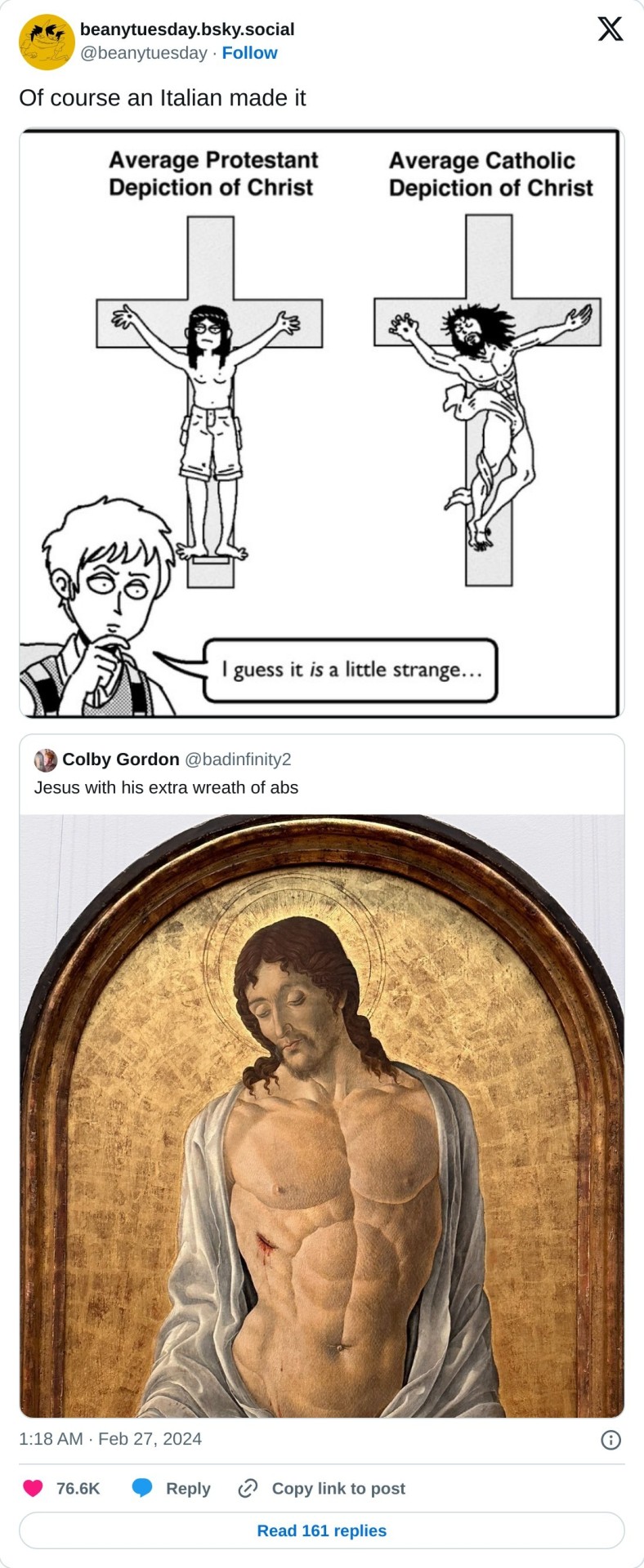
36 notes
·
View notes
Text
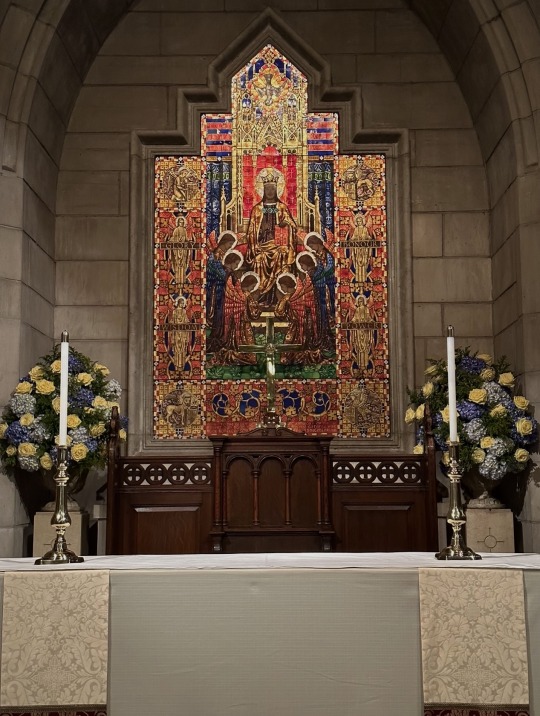
Stumbled into a beautiful Episcopal church, this afternoon.
39 notes
·
View notes
Photo

Men of the Protestant Reformation
The men who initiated and advanced the vision of the Protestant Reformation (1517-1648) did not set out, at first, to challenge the authority of the Catholic Church but only to correct what they saw as errors. In doing so, they launched a movement that would change how Christianity was understood and help shape the modern world.
Continue reading...
24 notes
·
View notes
Note
am doing a history project. can u tell me about the 95 theses?
Because Germany used a logarithmic decimal system at the time, many people are unaware that Luther in fact posted only 9.5 theses on his local church door. Because the final thesis is cut off, it is considered the 0.5 beyond the other 9 theses. These theses are as follows:
Confession is good.
God accepts confessions, not the Pope.
Purgatory is a big load of Papal bull.
Paying for salvation is absurd, as God is already way rich.
God can buy anything he wants, he has so much money.
God could even buy the twittering of birds.
If God bought the twitter, then God should get to say anything God wants in those tweets, even reinstating banned bird species.
God can run twitter any way he wants, even if he wants to run it into the ground, because that's how free-market capitalism should work and everyone knows capitalism is the Christian way no matter what Jesus said about greed and the rich and the poor because America.
Comedy is now legal on twit-
Why Luther mentioned America is the source of much scholarly debate, as it had only just been discovered by Europe and was believed by most to be a small island notable only for having a new food called "potatoes."
Luther was thankfully largely ignored owing to his own heavily antisemitic statements, which he felt would be welcomed by the aforementioned twitter. He was soon forgotten, and Germany's Jewish population was not known to have any further problems.*
*According to many on twitter.
219 notes
·
View notes
Text

A Nativity scene depicting Christ's birth with the figure symbolizing baby Jesus lying amid the rubble, a reference to the war in Gaza, inside the Evangelical Lutheran Christmas Church in the West Bank town of Bethlehem, Sunday, Dec. 10, 2023. World-famous Christmas celebrations in Bethlehem have been put on hold due to the ongoing Israel-Hamas war. (AP Photo/Mahmoud Illean)
#religion#christianity#protestantism#lutheran#evangelical lutheran church in jordan and the holy land#christ child#advent#nativity#christmas#bethlehem#war#divinum-pacis
31 notes
·
View notes
Text
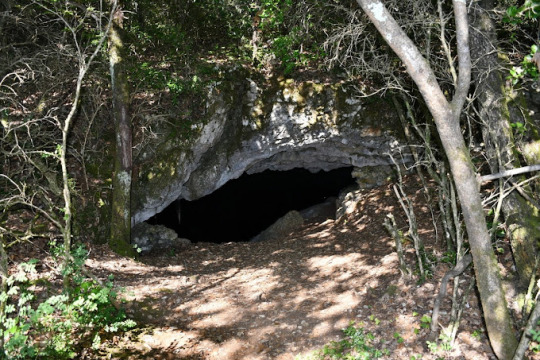



Genuine French Protestant church, post-Revocation of the Edict of Nantes. (Grotte des Camisards, Rochegude, history)
I've personally been in this one, it has some nice acoustics - you just have to be careful not to hit your head going in, the entrance is about 1.5 meters tall but gets bigger the deeper you go. No stained glass windows, but the forest is beautiful! How amazing to see God's glory all around you when you step out. And how gracious is God that He'd come in such lowly places to comfort and uplift His people.
#christianity#protestant churches#catholicism#protestantism#church history#protestants#huguenots#camisards#france
34 notes
·
View notes